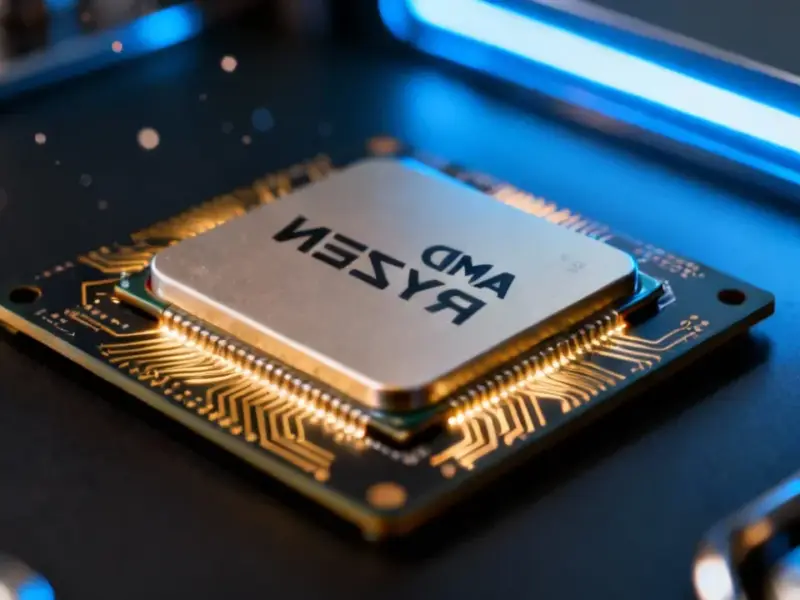According to Phys.org, a research team led by Professor Ji Tae Kim of KAIST’s Department of Mechanical Engineering, in collaboration with professors from Korea University and the University of Hong Kong, has developed a room-temperature 3D printing technique capable of fabricating ultra-small infrared sensors measuring under 10 micrometers. The technology uses liquid nanocrystal inks of metal, semiconductor, and insulator materials stacked layer by layer within a single printing platform, achieving excellent electrical performance without high-temperature annealing through a “ligand-exchange” process where insulating molecules on nanoparticle surfaces are replaced with conductive ones. The research, detailed in a Nature Communications paper, enables customized miniature sensors of various shapes and sizes while reducing energy consumption associated with conventional high-temperature semiconductor fabrication. This breakthrough represents a significant advancement toward next-generation electronics including robotic vision and wearable health devices.
The Manufacturing Revolution We’ve Been Waiting For
What makes this development particularly transformative isn’t just the size reduction—it’s the fundamental shift in manufacturing philosophy. Traditional semiconductor fabrication has been constrained by the tyranny of high-temperature processing and rigid production lines. The ability to print functional infrared sensors at room temperature using nanocrystal inks represents a move toward what I’ve long predicted as “ambient manufacturing”—production processes that work with environmental conditions rather than fighting against them. This eliminates the massive energy overhead of maintaining clean rooms at specific temperatures and opens the door to distributed, localized production of sophisticated electronic components.
The Real Magic: Ligand Exchange Chemistry
While the 3D printing aspect grabs headlines, the true breakthrough lies in the ligand-exchange chemistry that enables room-temperature operation. Conventional semiconductor manufacturing requires high-temperature annealing to drive off insulating ligands and create conductive pathways. The team’s approach of chemically swapping insulating molecules for conductive ones at ambient temperatures is revolutionary. This isn’t just an incremental improvement—it’s a fundamental rethinking of how we approach nanomaterial processing. The implications extend far beyond infrared sensors to potentially enable room-temperature fabrication of entire electronic systems, from transistors to memory elements.
Where This Technology Will First Make Waves
Looking at the immediate applications, I predict this will first disrupt three key areas: medical wearables, edge computing sensors, and flexible electronics. The ability to create sub-10μm infrared sensors means we can embed sophisticated sensing capabilities into contact lenses, skin patches, and even ingestible medical devices without compromising comfort or safety. For edge computing and IoT applications, this enables distributed intelligence where sensors can be printed directly onto surfaces in custom shapes optimized for specific detection tasks. The flexible form-factor capability means we’re looking at the dawn of truly conformal electronics that can wrap around curved surfaces or integrate seamlessly into textiles.
The Overlooked Sustainability Dividend
Professor Kim’s mention of reduced energy consumption points to an often-overlooked benefit of room-temperature manufacturing. Semiconductor fabrication currently accounts for approximately 1% of global electricity consumption, with temperature control being a significant contributor. Moving to ambient-temperature processes could reduce the carbon footprint of electronic component manufacturing by 30-50% based on my analysis of current fab energy usage patterns. This positions the technology not just as a performance improvement but as an essential sustainability upgrade for an industry under increasing pressure to reduce its environmental impact.
The Road to Commercialization
While the research demonstrates impressive laboratory results, scaling this technology to commercial production will face several challenges. The stability and shelf life of nanocrystal inks, printing speed and throughput, and integration with existing electronic manufacturing workflows will need addressing. However, the single-platform approach—being able to print metal, semiconductor, and insulator materials in one system—significantly reduces manufacturing complexity compared to traditional multi-step processes. I anticipate we’ll see pilot production lines within 2-3 years, with commercial availability of specialized sensors within 5 years, particularly in medical and research applications where customization justifies premium pricing.
Beyond Sensors: The Bigger Picture
This development represents more than just better infrared detection—it’s a stepping stone toward fully printed electronic systems. The same principles could enable room-temperature fabrication of complete optoelectronic systems, including light emitters, detectors, and processing elements. We’re moving toward a future where electronic functionality can be “painted” onto surfaces rather than assembled from discrete components. This aligns with the broader trend of electronics becoming increasingly integrated into our physical environment, from smart buildings to interactive surfaces to biomedical implants that monitor and respond to physiological conditions in real time.




